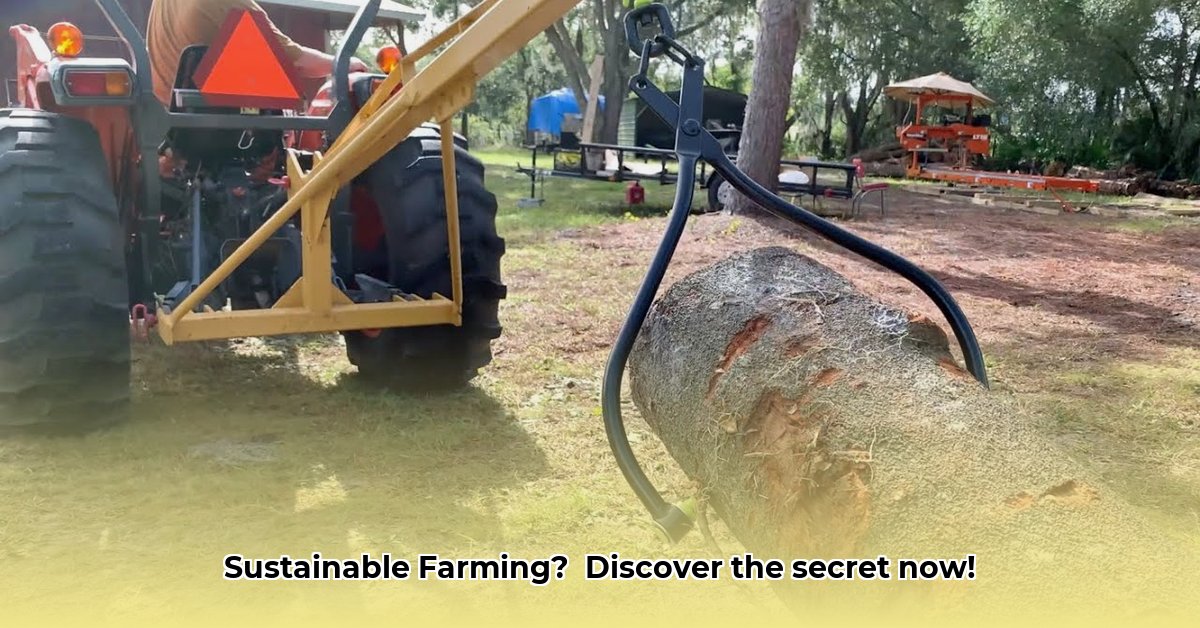
Sustainable agriculture is crucial for the future of food production and environmental stewardship. A key component of sustainable farming is the adoption of efficient and environmentally friendly machinery. This guide provides actionable steps for farmers looking to incorporate sustainable mechanization into their operations. For more information on choosing the right tractor, check out this helpful tractor buying guide.
Types of Sustainable Agricultural Machinery
Several types of machinery contribute to sustainable agriculture. Choosing the right equipment depends on individual farm needs and resources.
Electric Tractors
Advantages: Electric tractors produce zero tailpipe emissions, reducing greenhouse gas contributions. They often operate more quietly than traditional diesel tractors, minimizing noise pollution. Many models offer lower running costs due to reduced fuel expenses.
Disadvantages: Higher initial purchase price compared to diesel counterparts. Limited operational range on a single charge necessitates strategically placed charging stations. The availability of electric tractors with sufficient power for all farming operations may be limited depending on the farm's scale and needs.
Alternative Fuel Tractors (Biodiesel, etc.)
Advantages: Biodiesel reduces reliance on petroleum-based fuels, utilizing renewable resources. It offers a lower carbon footprint compared to traditional diesel.
Disadvantages: Biodiesel availability can vary regionally, potentially impacting accessibility. The cost of biodiesel can fluctuate. While emissions are reduced compared to conventional diesel, they are not eliminated.
Precision Farming Tools (GPS Guidance, Sensors, Automated Systems)
Advantages: GPS guidance systems enhance accuracy in planting, spraying, and harvesting, reducing overlaps and waste of inputs such as seeds, fertilizers, and pesticides. Sensors monitor various factors, including soil conditions and crop health, enabling data-driven decision-making. Automated systems optimize operations, minimizing human error.
Disadvantages: Higher initial investment in technology and specialized training may be required. The technology may be susceptible to malfunctions if not properly maintained.
Efficient Tillage Equipment (e.g., No-Till Implements)
Advantages: No-till farming minimizes soil disturbance, preserving soil structure, reducing erosion, and improving water retention. This leads to improved soil health and potentially higher yields. Reduced fuel consumption and labor compared to conventional tillage practices.
Disadvantages: May not be suitable for all soil types or cropping systems. Initial setup and adjustment may require specialized knowledge. Weed management might be more challenging.
Choosing the Right Equipment: A Decision-Making Framework
Selecting sustainable equipment requires careful consideration of several factors:
Farm Size and Crop Type: Small-scale farms might benefit from versatile, smaller equipment, while larger operations may require specialized machinery for efficiency. The type of crops dictates the kind of implements needed (e.g., harvesting equipment for grain crops versus pruning tools for orchards).
Budgetary Considerations: While sustainable equipment may have higher initial costs, long-term savings on fuel, fertilizers, and pesticides can offset the expense. Explore financing options, leasing arrangements, and government incentives to make sustainable choices affordable.
Infrastructure Requirements: Assess the availability of electricity for electric tractors, proximity to biodiesel suppliers, and existing technology infrastructure for precision farming tools. Consider the need for upgrades to support new equipment.
Government Incentives and Funding: Research available grants, subsidies, and tax breaks at the local, state, and federal levels to offset the cost of sustainable equipment and practices. Many government agencies offer support for farmers adopting environmentally friendly technologies.
Implementing Sustainable Practices: Optimizing Equipment Usage
Maximum sustainability is achieved through responsible equipment operation and maintenance:
Efficient Fuel Management: Proper maintenance, including regular servicing and timely repairs, is critical for maximizing fuel efficiency and reducing running costs. Appropriate tire pressure can also significantly impact fuel consumption.
Minimizing Soil Compaction: Avoid working fields when wet to prevent compaction and improve soil structure. No-till farming or minimum tillage practices help maintain soil health and minimize erosion.
Precision Application of Inputs: Precision farming tools enable site-specific application of fertilizers and pesticides, reducing waste and environmental impact. Optimized application results in cost savings and improved crop yields.
Data Management for Improved Decision-Making: Track fuel consumption, yields, and other relevant metrics. Analyze this data to identify areas for improvement and refine farming techniques. Data analytics tools can aid this process.
Case Studies: Real-World Success Stories
Numerous farmers have successfully implemented sustainable mechanization, achieving both environmental and economic benefits. For example, studies show that no-till farming can significantly reduce fuel costs while improving soil health. Similarly, the use of electric tractors often translates into reduced emissions and quieter operation, benefiting both the farmer and the community.
Conclusion: Embracing a Sustainable Future
Sustainable agricultural mechanization is not merely a trend; it's a necessity for long-term agricultural viability and environmental protection. By carefully choosing and utilizing appropriate equipment and adopting sustainable farming practices, farmers can enhance productivity, efficiency, and profitability while minimizing their environmental footprint. Further resources on sustainable agriculture practices and available incentives are readily available online and through local agricultural extension offices.